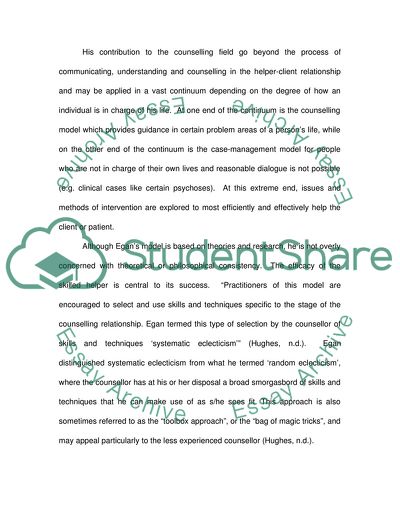Cite this document
(The Egan Model of Counseling Essay Example | Topics and Well Written Essays - 2500 words, n.d.)
The Egan Model of Counseling Essay Example | Topics and Well Written Essays - 2500 words. https://studentshare.org/psychology/1708103-discuss-what-you-would-consider-to-be-the-strengths-and-limitations-of-the-skilled-helper-egan-model-approach-to-counselling-helping
The Egan Model of Counseling Essay Example | Topics and Well Written Essays - 2500 words. https://studentshare.org/psychology/1708103-discuss-what-you-would-consider-to-be-the-strengths-and-limitations-of-the-skilled-helper-egan-model-approach-to-counselling-helping
(The Egan Model of Counseling Essay Example | Topics and Well Written Essays - 2500 Words)
The Egan Model of Counseling Essay Example | Topics and Well Written Essays - 2500 Words. https://studentshare.org/psychology/1708103-discuss-what-you-would-consider-to-be-the-strengths-and-limitations-of-the-skilled-helper-egan-model-approach-to-counselling-helping.
The Egan Model of Counseling Essay Example | Topics and Well Written Essays - 2500 Words. https://studentshare.org/psychology/1708103-discuss-what-you-would-consider-to-be-the-strengths-and-limitations-of-the-skilled-helper-egan-model-approach-to-counselling-helping.
“The Egan Model of Counseling Essay Example | Topics and Well Written Essays - 2500 Words”. https://studentshare.org/psychology/1708103-discuss-what-you-would-consider-to-be-the-strengths-and-limitations-of-the-skilled-helper-egan-model-approach-to-counselling-helping.


